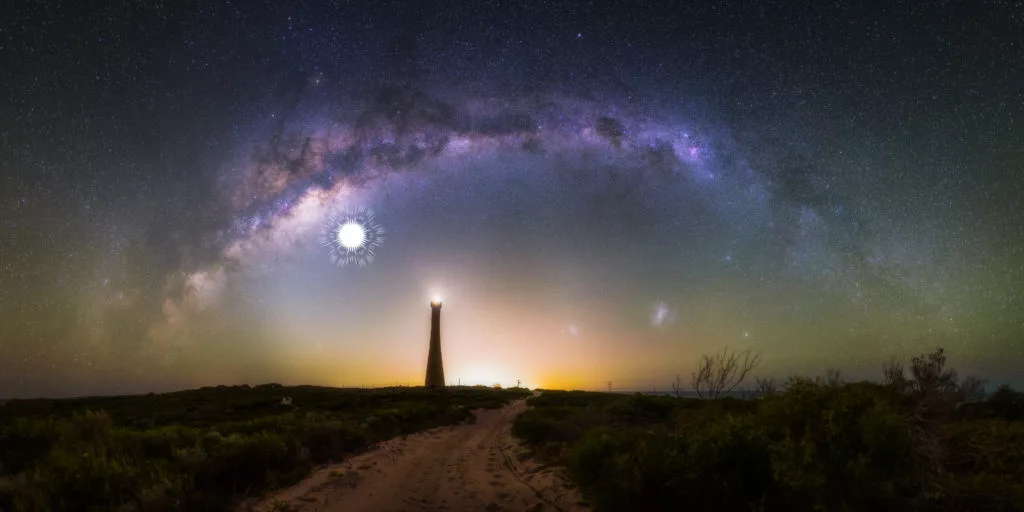A new view of the Milky Way has revealed how the galactic center would appear to human beings if our eyes were able to detect low-frequency radio waves. The image shows the signatures of magnetic fields permeating the galactic plane, which includes regions of intense star formation and the remnants of dramatic supernova explosions.
Our Milky Way galaxy is essentially a massive cosmic pinwheel made up of stars, planets, black holes and enormous clouds of dust and gas. The bulging center of the pinwheel is incredibly dense, and plays host to a monstrous supermassive black hole called Sagittarius A*. From this focal point, majestic spiral arms extend outwards towards the relative emptiness of intergalactic space.
The Sun orbits the galactic center embedded in what is known as the Orion Spur – a relatively small part of the galaxy sandwiched between the grander Sagittarius and Perseus spiral arms.
On a dark night the galactic plane, looking towards the center, can be seen as a faint, blurry river of light arcing across the sky. This is the Milky Way as we perceive it, bound by the limitations of our human eyes, but we aren’t getting the whole picture.

The universe is bristling with objects that emit radiation, which we perceive as light in the visible part of the electromagnetic spectrum. Sadly, most of the electromagnetic radiation (light) shooting around the cosmos exists at wavelengths that are invisible to the human eye. What we see when we look at the night sky is akin to a painting stripped of certain shades of color – beautiful but incomplete.
A newly-released image is now giving us a chance to appreciate some of the invisible beauty of the Milky Way, by revealing what the galactic center would look like to us if we could see radio waves. Ordinarily, radio waves occupy a low-frequency part of the electromagnetic spectrum that is invisible to the naked eye. However, it can be observed by specialized telescopes.
The new image was created by Dr. Natasha Hurley-Walker, an astrophysicist from the Curtin University node of the International Centre for Radio Astronomy Research (ICRAR).
The data used to create the imagery was collected by the Murchison Widefield Array (MWA) telescope, which is located in the Western Australian outback. The MWA had been watching the heavens as part of the GaLactic and Extragalactic All-Sky MWA survey (GLEAM), which surveyed radio emissions over a wide swathe of the night sky ranging between 72 - 231 MHz. The survey has a resolution of roughly two arcminutes, which is about the same as that of the human eye.
Dr. Hurley-Walker made the image using the GLEAM data, with the help of the Pawsey Supercomputing Centre in Perth, Australia.

"It’s the power of this wide frequency range that makes it possible for us to disentangle different overlapping objects as we look toward the complexity of the Galactic Center," said Dr. Hurley-Walker. "Essentially, different objects have different 'radio colors,' so we can use them to work out what kind of physics is at play."
Red areas in the image denote regions emitting the lowest frequencies of radio waves, while middle frequencies are shown in green, and high in blue. The vista shows the locations of supernovae as bright, small spheres, while areas in which masses of energetic young stars are being born show up blue. Golden filaments highlight the locations of large and powerful magnetic fields.
Astronomers have discovered 27 supernova remnants in the GLEAM data, including one that may have been visible to the indigenous people of Australia when it first lit up the night sky roughly 9,000 years ago. The star exploded in a relatively empty area of the galaxy away from the galactic plane, where the vast majority of the stellar bodies that inhabit the Milky Way are located.
Having determined the date of explosion, and the unusual location of the star, Dr. Hurley-Walker and colleagues hope to talk to Aboriginal elders to discover whether the ancient people made any kind of recording of the event.






